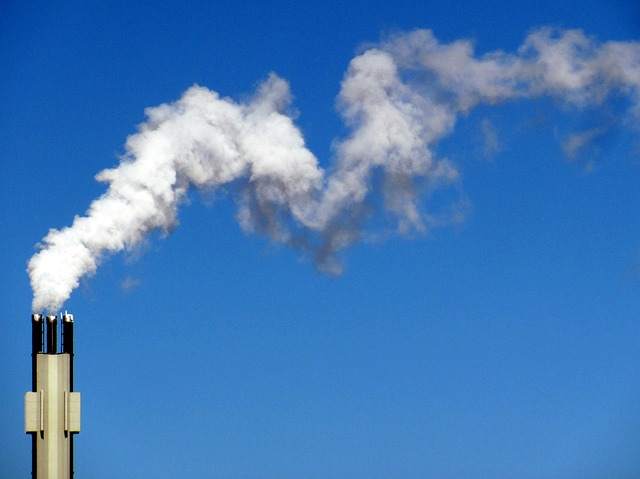Less than two years ago, documents surfaced showing that in the 1970s ExxonMobil knew about the damage that fossil fuel emissions were causing to the environment and how they were contributing to global warming. Just a few weeks ago, these reports surfaced again when a recent study led by Harvard researcher Naomi Oreskes showed how the global oil giant had engaged in a decades-long misinformation campaign to cover up the damage that it and other fossil fuel companies were inflicting on the planet.
One of the immediate questions asked by climate-concerned citizens was whether or not this cover-up could result in lawsuits against the oil giant. However, due to the amount of unknown variables in the legal equation, any lawsuit filed against the company appears to be a long shot, at best.
Still, a new peer-reviewed study from the Union of Concerned Scientists and its collaborators may give us some of the missing variables in the legal equation.
For example, in order to prove liability (and not just that the company misinformed the public, which under most circumstances, is not necessarily illegal), you have to prove that the specific emissions from a specific company caused a specific detrimental outcome. In the past, those numbers had not been tracked or quantified, but this latest study from the Union of Concerned Scientists did exactly that.
From this study:
“Researchers have quantified the contributions of industrialized and developing nations’ historical emissions to global surface temperature rise. Recent findings that nearly two-thirds of total industrial [carbon dioxide] and [methane] emissions can be traced to 90 major industrial carbon producers have drawn attention to their potential climate responsibilities.”
Some of the key findings of the new report include the following:
Emissions traced to the largest 90 carbon producers contributed:
- Approximately 57 percent of the observed rise in atmospheric carbon dioxide since 1880.
- Nearly 50 percent of the rise in global average temperature since 1880.
- About 30 percent of global sea level rise relative to 1880 levels.
Emissions traced to 50 investor-owned carbon producers, including BP, Chevron, ConocoPhillips, ExxonMobil, Peabody, Shell, and Total, were responsible for:
- Roughly 16 percent of the global average temperature increase from 1880 to 2010.
- Around 11 percent of the global sea level rise during the same time frame.
As the report correctly points out, this new information is vital for future discussions about emissions because it helps to bring accountability to the conversation. Once we connect the dots to the responsible parties, it will give society a better chance at achieving some form of recompense, either in the courtroom or in the form of policy, for the damage that has been caused to the planet. (In addition, the Exxon documents help assign accountability to the damage caused to public discourse about climate change.)
The report builds off of research into the area of corporate responsibility for climate change which was first published in November 2013. That study from Richard Heede at the Climate Accountability Institute, who was also an author on this latest study, helped to quantify the amount of carbon and methane pollution from fossil fuel and concrete companies released between 1854 and 2010.
“Until a decade or two ago, no corporation could be held accountable for the consequences of their products’ emissions because we simply didn’t know enough about what their impacts were,” Myles Allen, a study co-author and professor of geosystem science at the University of Oxford in England, said in a statement. “This study provides a framework for linking fossil fuel companies’ product-related emissions to a range of impacts, including increases in ocean acidification and deaths caused by heat waves, wildfires, and other extreme weather-related events. We hope that the results of this study will inform policy and civil society debates over how best to hold major carbon producers accountable for their contributions to the problem.”
Related to this discussion is another study published this August in the journal Nature, which found that prehistoric methane emissions from sources such as melting permafrost have been overestimated. That means that today we’re less likely to see huge releases of trapped methane from melting permafrost (the so-called “methane time bomb”). As a result, however, it also means that current estimates of methane emissions from oil and gas production are likely too low.
“We can measure the total amount of methane very accurately, but it’s not easy to figure out what all the individual sources (such as natural sources, rice agriculture, livestock, gas and oil drilling, etc) contribute,” said Oregon State University researcher Christo Buizert. “Our method can distinguish between ‘contemporary’ methane (produced by microbes, for example) and ‘old’ methane (in geological reservoirs, [ocean methane hydrates], or old permafrost for example). Our data show that one such source of ‘old’ methane (natural geologic emissions) is vastly overestimated in current budgets. That means that another source of ‘old’ methane is larger than we previously thought — this is likely to be emissions due to gas and oil production.”
The fingerprints of the fossil fuel industry are all over the atmosphere.
This new data from the Union of Concerned Scientists provides us with a much clearer picture of how certain companies contributed to climate change and how much damage their specific emissions have caused. The data provided in this report could likely become one of the most valuable tools in the fight to hold corporations accountable for the harm they have caused to the planet.
Main image: Smokestack Credit: PixaBay, licensed under CC0 Creative Commons
Subscribe to our newsletter
Stay up to date with DeSmog news and alerts







